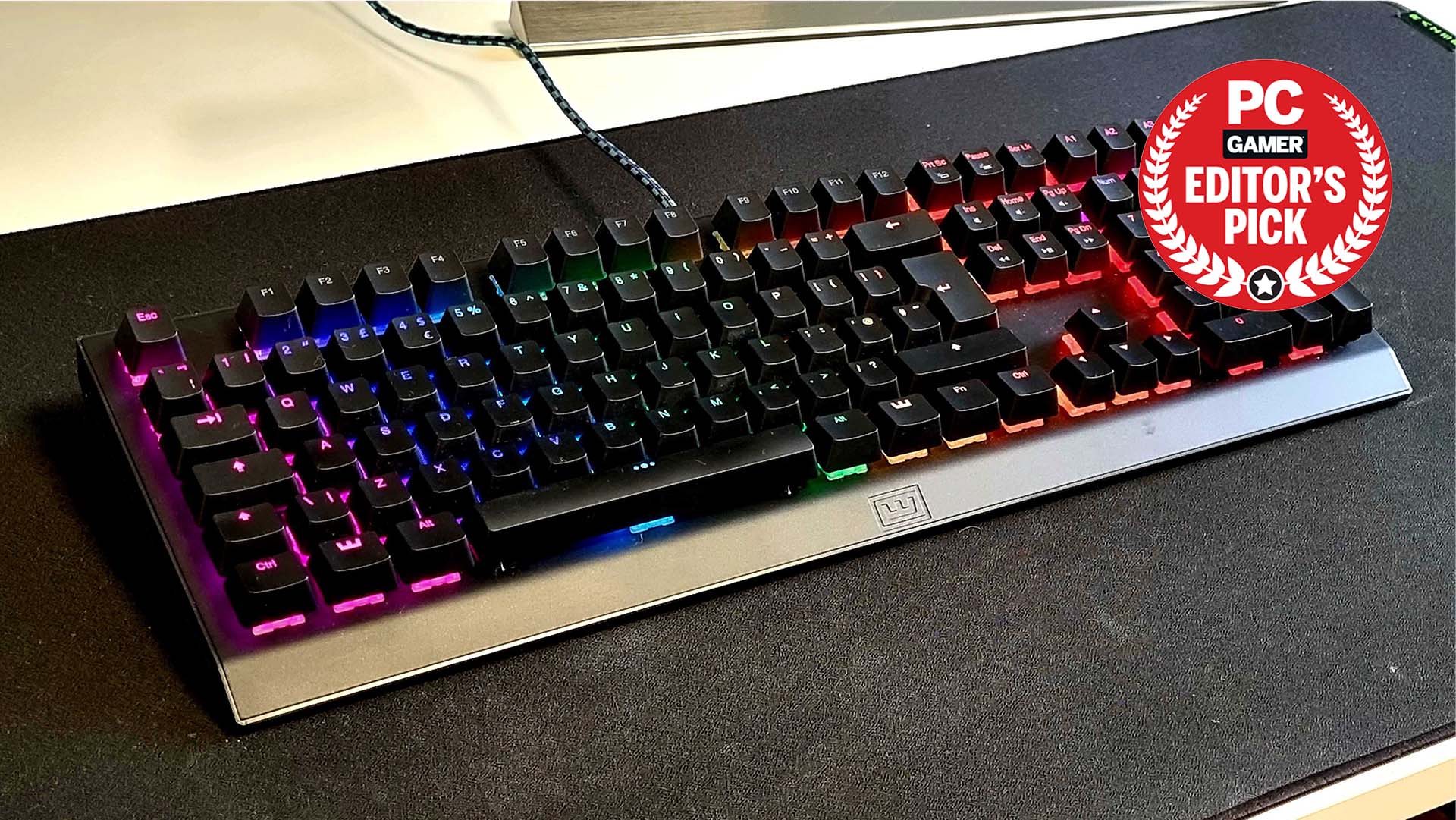Our Verdict
While still a niche function in-game, the Wooting Two HE delivers a multitude of reasons for analogue key switches, beyond even mimicking a controller's analogue stick. There's a whole bunch of customisability here, a great app, and superb build quality. So yes, I'm absolutely a fan.
For
- Analogue switches
- High reliability
- Hot swappable switches
- Adjustable actuation
- Solid app with easy to navigate menus and features
Against
- Games don't always play nice with analogue switches
- Analogue control takes some getting used to
PC Gamer's got your back
I've been a fan of Wooting's keyboards for quite some time now. Prior to this review, I'd looked at both of its previous first-rate keyboards, the Wooting One and Wooting Two, and loved what I've seen. That makes today's new arrival even more exciting, as the Wooting Two HE, the company's latest and greatest, should already have the makings of a fantastic mechanical keyboard, but also has to live up to my absurdly high expectations.
Thankfully, it absolutely does.
If you look no further than the black faceplate and keycaps of the Wooting Two HE, you might be wondering what the fuss is all about. I don't blame you, the Wooting looks decent, but it doesn't appear all too different to the mechanical gaming keyboards we've come to know. In fact, it's a little more boring than most in appearance, with some nowadays taking 'extra' to a whole new level.
For an RGB moderate such as myself, it delivers enough pizazz to tick all the boxes appearance-wise without going overboard. And looks are besides the point, so let's get into why it's actually exciting.
Size: Full (108/109 keys)
Switch: Lekker Hall effect (Gateron-made), Linear (60cN)
Stem: MX
Hot-swappable: Yes (Lekker only)
Keycaps: ABS
Actuation: 0.1–4 mm
Polling rate: 1,000 Hz
Media keys: function shortcuts
Connectivity: Wired, USB (Type-C) detachable cable
RGB lighting: Per-key lighting via app
Software: Wootility v4
Price: $195 / £169 / €161
The Wooting Two HE offers analogue key control: if you depress a key, say the W key, rather than send a simple on/off signal to your PC, the keyboard will measure the full range of that key's motion. That means you could alter your range of movement between walking and running in a game without the use of a controller, or even have some semblance of control in a driving game without an analogue stick or wheel. That's great for games like GTA V, where you're often switching between running around, driving, and even flying.
That's a concept we've started to see from bigger brands, though as far as I'm concerned it was Wooting that initially brought this concept to bear with a usable and affordable product in the Wooting One.
The Wooting Two HE differs from the Wooting One and Wooting Two in how it measures analogue input, however. Where the older Wooting boards relied on optical Flaretech switches, the newer HE board uses the Lekker switch, made by Wooting with popular switch maker Gateron, and relies on the Hall effect (hence Wooting Two 'HE') to achieve analogue input.
The Hall effect relies on the power of magnets. There's a magnet within the stem of every Lekker switch, and by measuring the magnetic force of that magnet as it moves, through a Hall effect sensor on the keyboard's PCB, the Wooting Two HE is able to accurately track the full depression and return of the mechanical switch.
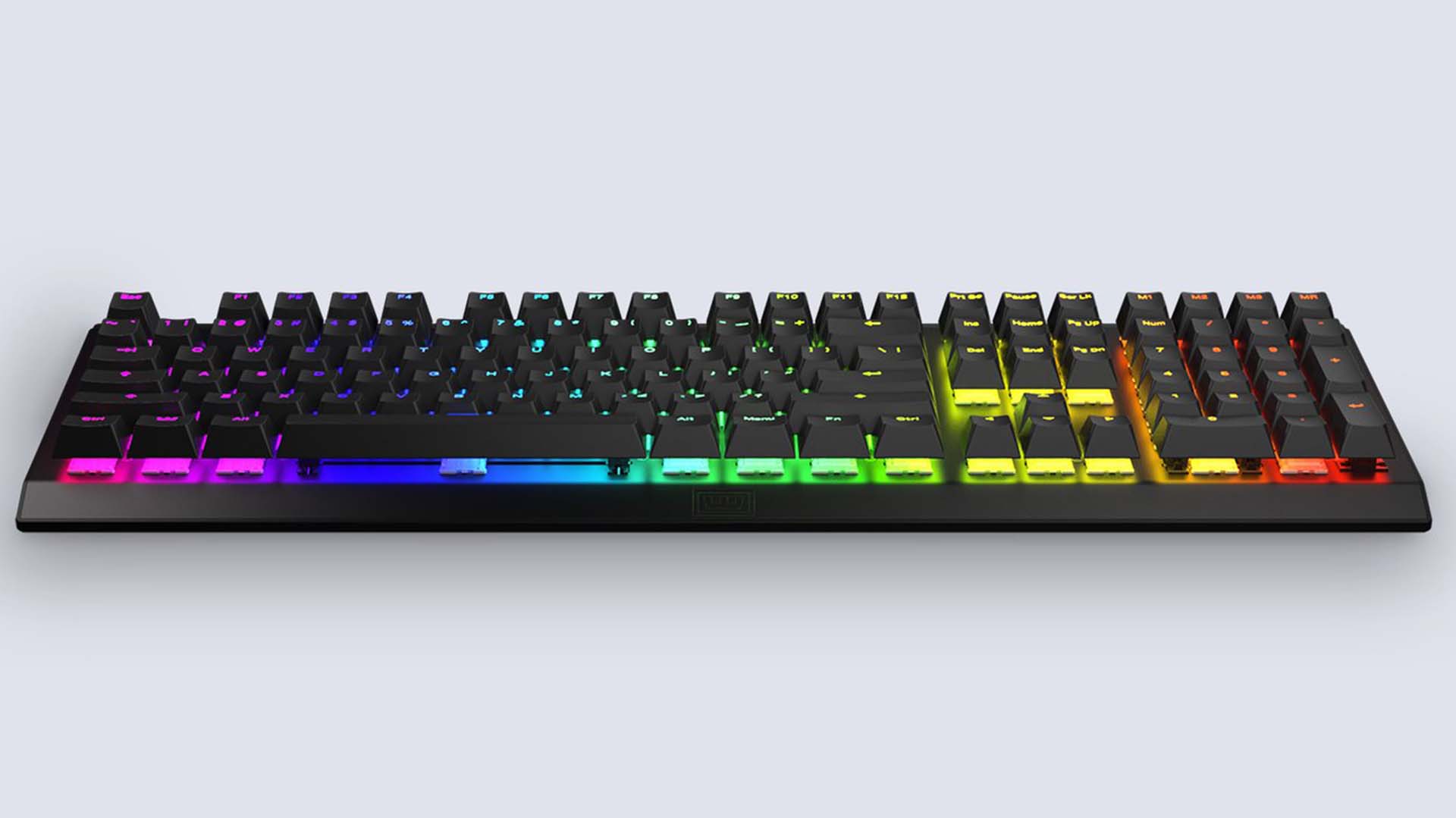
On the software side, a game will need to register this switch actuation as either DirectInput or Xinput. That means you'll largely want to set your left analogue stick up, down, left, right to your WASD keys on the Wooting, in order to replicate the best bits of analogue controller movement.
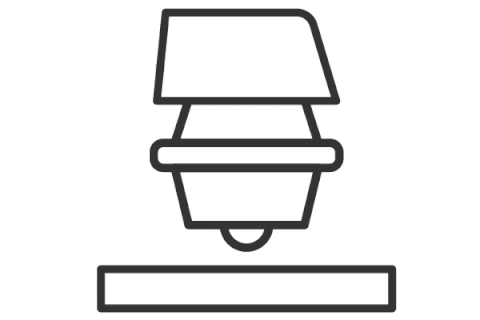
Though you are free to set up your Wooting's analogue input however you please. Unlike some analogue keyboards out there, every single switch on the Wooting Two HE is capable of running as an analogue switch. It does get a little fiddly if you go overboard, however, and game support can vary, which means you can't necessarily guarantee to get the most out of the Wooting in every game.
Though there are benefits of this Lekker switch for even those keys you don't utilise for analogue movement. For one, the actuation point of the Wooting's keys can be altered by the user in the Wootility, the company's in-house app and keyboard control centre.
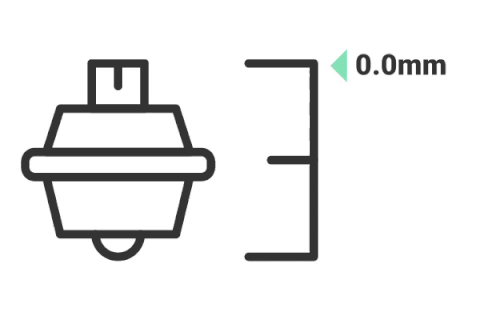
The range of actuation for a Lekker switch is 0.1–4.0mm, and this can be set on a per-key basis in 0.1mm increments. You can absolutely fine tune this keyboard to your precise preference, and you don't need to buy wholly different mechanical switches to do so.
Though one of the reasons I'm still so head over heels for the Wooting HE is that there's always another cool thing to do with analogue switches. Rapid trigger functionality allows makes for possibly faster response in games, through removing the need for a set reset point. Basically, the key can be depressed, let go a little, then depressed again. And that will count as a keypress whether you released the switch fully or not.
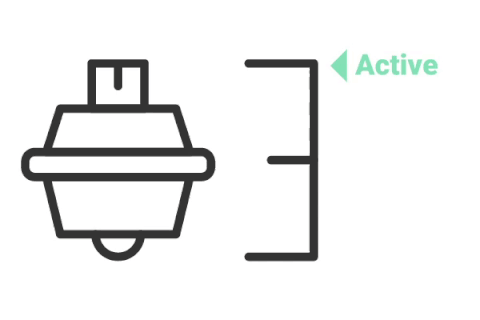
So next time you're furiously tapping away at your keyboard in a QTE, you won't have to work quite so hard.
There's also a dynamic keystroke feature, which I'll admit is a little past my pay-grade in terms of setting up and actually utilising correctly, but it's a pretty solid feature in the right hands. This uses the full range of analogue input to offer multiple actions (keypresses, macros) during different points of the key's motion.
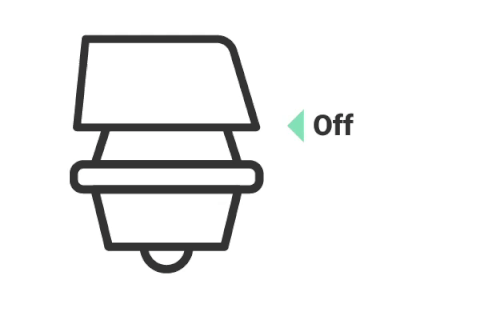
You want to have your entire moveset mapped to a single power key in-game? It's certainly possible. You could chain skills, moves, or spells in-game by applying them all to a single keypress. Or if you're really accurate, have a key do two different things depending on how far you press it.
I didn't actually find all that much use for that particular function during my usual writing/gaming schedule, instead I found myself using it most in shooters where I could ease my running pace a touch thanks to the analogue input. That said, there's a helluva lot to the Wooting's analogue functionality—I feel it's making the absolute most out of having analogue switches.
For the most part you'll be diving into the Wootility to make those changes to your Wooting's setup. It's also where you'll find the options to tweak your RGB lighting profile. The keyboard actually stores all this info on its 16MB of built-in memory, so if you really don't want the Wootility on your desktop, you could install it, boot it (account free), set your keyboard up, and uninstall it again. Everything should work just fine without it.
Of all the peripheral-specific applications out there, and boy are there a lot of them, I don't mind the Wootility one bit, either. It's simple, well put together, and has only improved since I last used it. It puts some other larger manufacturers to shame with how easy and smart-looking it is, in fact.
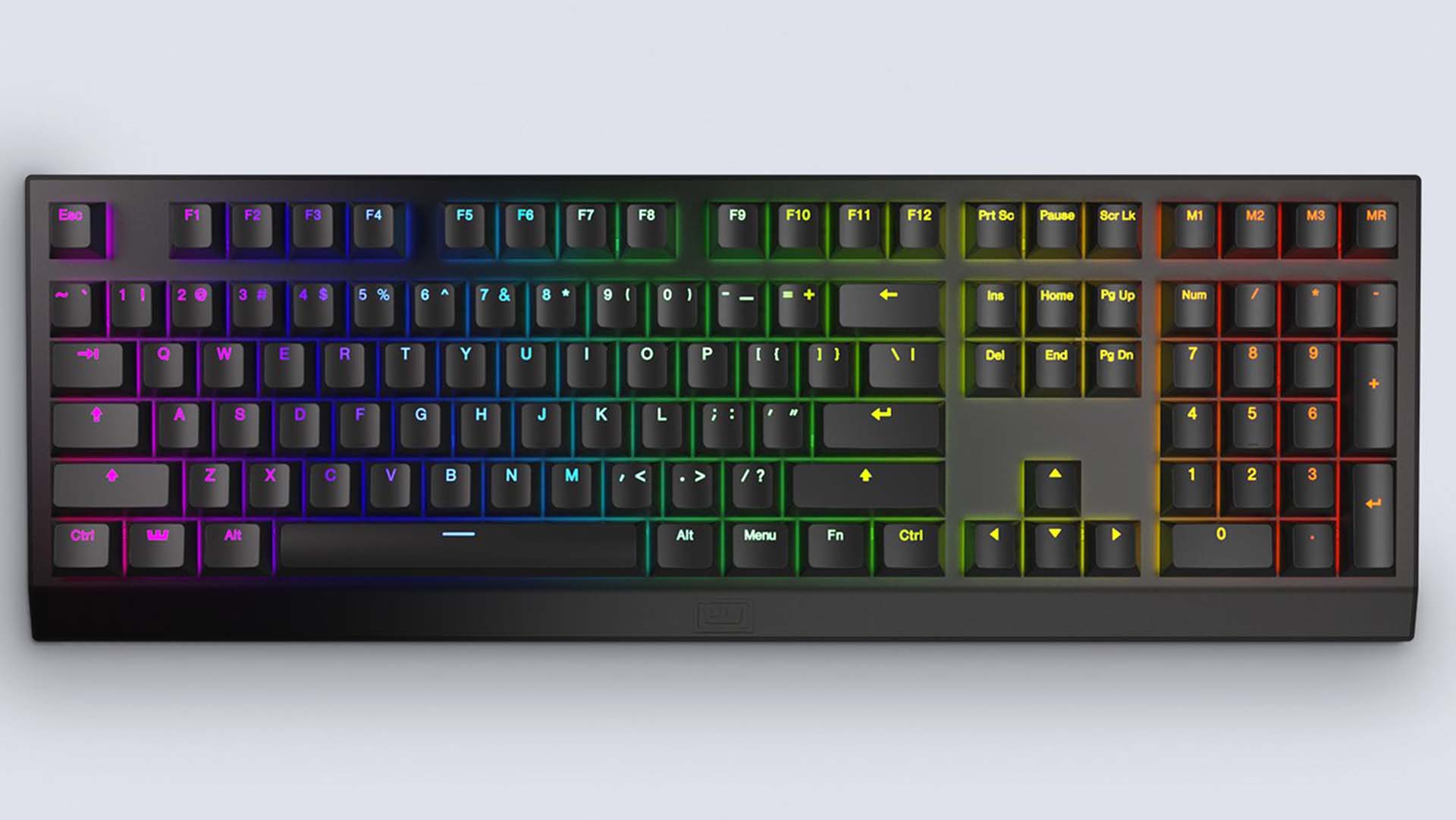
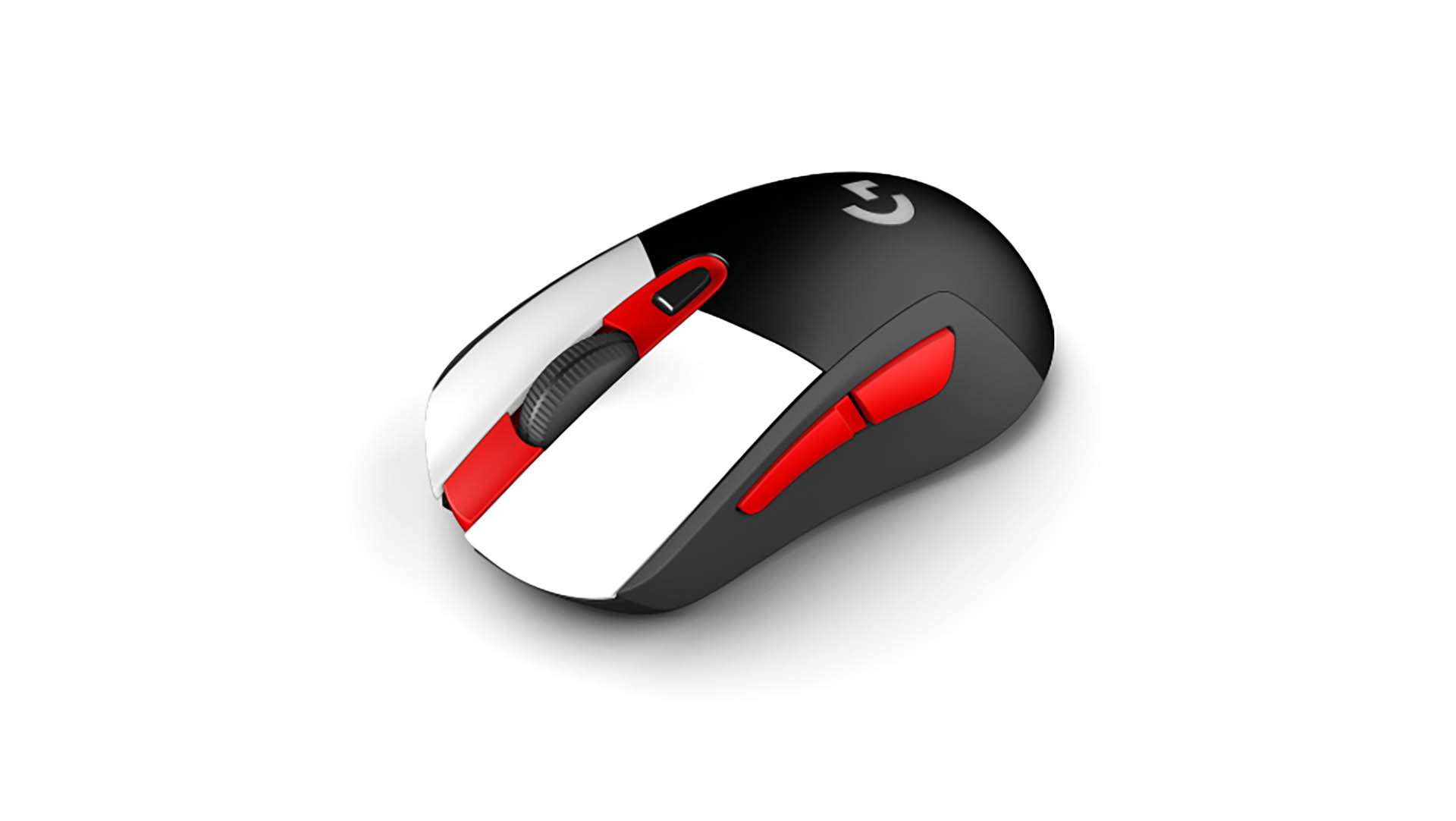
Best gaming mouse: the top rodents for gaming
Best gaming keyboard: your PC's best friend...
Best gaming headset: don't ignore in-game audio
As for price, the Wooting Two HE costs $195 (£169/€161), so it doesn't come cheap. It's missing the media keys and wrist rest (available as an extra for $28.80) you might expect at that price tag, too. Though it's not quite so absurd versus today's $200+ gaming keyboards, meaning you're not paying completely over-the-top costs for the analogue functionality.
Wooting generally does a great job of living up to expectations, though. The keyboard is solid, well-built, and comes with a two-year warranty. If a switch breaks, you can just swap it out, as the board itself is hot-swappable. That's one benefit of there not really being all that many mechanical moving parts with a magnetic Lekker switch, and another is that there's less to break in the first place.
That's what I've loved about every Wooting keyboard I've looked at so far, and no more so than the Wooting Two HE: they're not just built on a great concept, they absolutely deliver it. Even if you think you're sold on the analogue movement of the Wooting, and it can be limited in scope depending on your preferred games and genres, there are a handful of other great reasons to love it beyond that.
While still a niche function in-game, the Wooting Two HE delivers a multitude of reasons for analogue key switches, beyond even mimicking a controller's analogue stick. There's a whole bunch of customisability here, a great app, and superb build quality. So yes, I'm absolutely a fan.

Jacob earned his first byline writing for his own tech blog. From there, he graduated to professionally breaking things as hardware writer at PCGamesN, and would go on to run the team as hardware editor. He joined PC Gamer's top staff as senior hardware editor before becoming managing editor of the hardware team, and you'll now find him reporting on the latest developments in the technology and gaming industries and testing the newest PC components.
